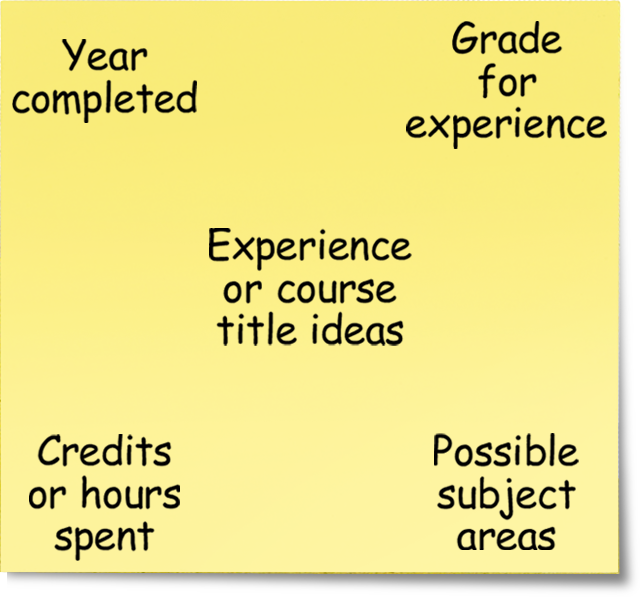
Delight Direct Learning Makes Homeschooling Better
Delight directed learning makes homeschooling better for everyone involved. For parents, it reduces burnout, improves children’s cooperation, and develops self-motivated learners. For children, it increases the love of learning and makes learning more relevant and meaningful. Delight directed learning will shape and mold your child’s career goals, lead to great experiences that can be put on the transcript, and helps create a fabulous resume. It can improve your child’s chances of earning college admission, scholarships, and job opportunities - all while still in high school.
Delight directed learning is sometimes called specialization or child-led learning and colleges sometimes call it passion. It can be self-study, self-motivated, self-directed learning. These self-directed interests can develop into passions that lead to careers. The solution to dull drudgery and hated homeschooling is allowing it to happen naturally. Be warned, though! Parents often call it "frustrating, boring and annoying" if they don't have the same interests as their child.
Learn how to put fabulous fun on your homeschool transcript and convert natural learning into high school credit with this free Ebook: How to Convert Delight Directed Learning Into High School Credit
Be students of your student. Watch what they do for fun.
Independent learning can be included within core subjects when the child fancies academic subjects such as history or English. For other families, the five major subjects (English, math, history, science and foreign language) are intentionally taught quickly within the first few hours of the day. The remaining school hours include high school credits collected from delight directed learning.

Avoid Excessive Technology
To successfully include delight directed learning in the homeschool, parents need to avoid one huge impediment to learning. That elephant in the room, the hurdle you need to overcome, is staring you in the face right now. Technology can thwart or completely shut down passionate learning.
Delight directed learning requires time. Make sure to build margin into your homeschool.
The overuse of technology limits free time, steals margin, and eliminates boredom. Without free time (and frankly, without boredom) children never learn to entertain themselves with interesting pastimes. To develop passionate leaners, you need to limit TV, computer, tablet, and smart phone use. A reasonable amount of technology is about two hours per day, including social media and gaming. This allows the teen enough time to goof off, but isn't so much that it impedes development of interests. If you feel as if you need help with the harsh reality of technology in your home and how to set technology boundaries for healthy and happy children and teens, check out my book, TechnoLogic: How to Set Logical Technology Boundaries and Stop the Zombie Apocalypse.
Let Delight Directed Learning Come Naturally
If they learn it because they like it, you don’t have to teach it until they hate it. Delight directed learning occurs when a person pursues learning about a topic because they take great delight in it, not simply because it’s a required course.
My son Alex was a self-motivated extreme learner. If only it were an Olympic event, like extreme sports! He learned novel writing for fun, and wanted to take a third year of French even though I didn’t have a curriculum for him. He asked for an American Government curriculum for Christmas, and read every economics book he could get his hands on. Although his “love language” is reading, he was still a delight directed learner. When it was time to make his transcript, I still had to figure out how to translate his experiences onto a piece of paper.
For our family, the problem seemed huge. What should I do with all the experiences that cover a wide range of subjects? Was that report on Jean-Baptiste Say (the French Economist) a paper on history, economics, or foreign language? Was my son Kevin’s enjoyment of Russian History just part of World History, or could it be a course by itself? We had SO many papers that my children wrote that I didn’t know what subject I should attribute them to! Where should I file each of them?
I eventually found a system that could help me sort out all their delight directed learning, using my understanding of traditional grades and credits. It’s not difficult once you get the hang of it. Think about any textbooks that you happen to use. Once you understand how to calculate grades and credits with a book, it’s easier to understand how to do it for delight directed learning.

The Sticky Note Strategy
The Sticky Note Strategy
When speaking to colleges, you need to use words and numbers that colleges understand. Applying to college isn't like talking to your friend or a seasoned homeschool parent who understands the daily grind of homeschooling high school. Even so, colleges do understand grades, high school credits, and educational language. You need to keep those records
Once I figured out how to keep track of my kids’ delight directed learning, I realized that my system would work for all delight directed learners (not only “book learners”). I also realized that it could help parents who are kinesthetic learners themselves. My strategy is simple, fun, and only requires one small purchase. Sticky notes. Yup. Those small square notes save the day again! You can determine what to do with each experience using a simple sticky note
For each activity your student is involved in, there are five pieces of information you need to remember. Write these five things on the sticky note and save it with your homeschool records. At the end of each year, group those sticky notes together, and combine them to create high school courses.
For each activity your student is involved in, there are five pieces of information you need to remember. Write these five things on the sticky note and save it with your homeschool records. At the end of each year, group those sticky notes together, and combine them to create high school courses.
1. Name the Experience
On the middle of a sticky note, write the name of the experience. What did the child do? “Perform in Nutcracker” or “Crazy amounts of crochet and crafting.” Do you have any course title ideas, such as “Theatrical performance” or “Creative Crafts?” Guess – and feel free to guess many times on each sticky note!
2. Note the Year
What school year did your child do this? Sometimes it will be a school year, like 2019-2020, and other times it will be for a short duration, such as a play in November of 2018.
3. Grade the Experience
Did your student complete the project to your expectations? Were they successful, did they receive positive feedback, or learn something? Remember that you don’t have to test in order to give a grade. Instead, you can evaluate them in other ways. It's appropriate to give a Grade of A or 4.0 if your child has mastered the concepts, has high test scores, meets high expectations, or loves the subject and works excessively on it.

4. Note Credits Earned or Hours Spent
Count or estimate the number of hours your child spent on the project. A total of 75 to 90 hours could be recorded as “1/2 credit” when your child is done with the experience. If they have accumulated more than 180 hours, you could consider it a full credit. Or you might choose to divide up the experiences into smaller, bite-sized pieces and then regroup them into other courses with 180 hours apiece. If your child accumulates less than 75 hours, you will be grouping the sticky notes together. Keep sticky notes even when the activity required few hours. You can use those experiences no matter how many hours they spend.
5. Consider Subject Areas
You may not know which subjects you will use for each experience, but it’s good to record the possibilities. With all our reports and papers, I often put several ideas on each note. One paper might be regarded as English, history, economics, or French. By making a note of it, I could decide later which course needed that experience to make up a full credit. If history was already packed, then I would use another subject area.
6. Arrange into Affinity Groups
Once you have completed sticky notes, don’t review them until you work on the transcript. Checking them too often can cause frustration and insecurity, so only review them when you update the transcript. This will help you keep the big picture in mind. When you are ready to work on your child’s transcript, spread all the sticky notes on the table or floor. Then put them into “affinity groups,” groups of similar things. As you combine these activities, work to combine them into groups that ultimately add up to one credit or half credit subjects.
Once you have made a decision, put the course on the transcript. You can make a note of the experiences you included on the transcript, if you want to. This will help when making course descriptions. But once you’ve decided on a credit, try not to stress about it again. It’s easy enough to change when you need to, but simply sorting those experiences into groups is a success. You have successfully grouped your child’s delight directed learning into high school level courses!
Once you have made a decision, put the course on the transcript. You can make a note of the experiences you included on the transcript, if you want to. This will help when making course descriptions. But once you’ve decided on a credit, try not to stress about it again. It’s easy enough to change when you need to, but simply sorting those experiences into groups is a success. You have successfully grouped your child’s delight directed learning into high school level courses!

The Testing Strategy
Another way to quantify delight directed learning is to give subject tests. This doesn’t work for every subject or every child, but it’s an option to consider. Instead of testing your child as they are learning, allow them to learn a subject naturally. When they are done, you can give them a sample test from a major test provider. If they pass the sample test at home or at the testing center, you know how much they have learned and have a grade to put on their transcript. There are three tests available that will help with this strategy: Advanced Placement® (AP®) exams, and CLEP® tests from the College Level Exam Program.
Parents don’t always know what their children are learning. There is so much life that goes on without parental involvement – and so many books! It’s amazing what children learn when you aren’t looking!
Using CLEP® exams, I found out how true this could be! I told my students to look over the exams “just to see what they were like.” One son was able to pass an exam in “Business Law,” even though I had never seen a law book in my home. He passed the “Principles of Marketing” test, even though I had never seen a marketing book in my home. He passed both “Microeconomics” and “Macroeconomics,” even though I still don’t know exactly what those two words mean. By testing them, I was able to include some courses on the transcript that were a surprise even to me!
When using tests to document delight directed learning, be sure to avoid failure. Purchase a book with sample tests in it and give the exam at home first. Only take your student to an official test if you are reasonably sure they can pass. Your goal is to find out what they have learned, not demonstrate what they have not learned.

Find Balance
Find Balance
Parents need to find a balance, however. College preparation means parents must cover the core classes and at the same time allow for delight directed learning. When you can, cover the core and capture delight with independent learning.
When planning your week, first be sure to cover the core classes of reading, writing, math, science, and social studies. Each family has classes they consider non-negotiable core classes. Within these core classes, try to teach in an interesting way. It's possible to teach many core subjects with delight directed classes, but make sure you cover the core one way or another.
Once the core is covered, capture your child’s delights. Translate them into courses on your child’s transcript. You don't have to plan, direct, or evaluate learning through tests or quizzes. Simply capture your child’s learning.
This article is an excerpt taken from Chapter 10 of my book, “Setting the Records Straight: How to Craft Homeschool Transcripts and Course Descriptions for College Admission and Scholarships” available on Amazon.

6. Focus on Your Kids
Include delight directed learning. Homeschoolers are good at fulfilling this New Year's Resolution, and pouring their love into their children. This is really the easiest resolution of all! However, for homeschoolers this is more of a “letting go” than a “adding on.” Let go of your ideas of teaching, and give your children more time for delight directed learning. As your children mature, they will develop areas of passionate interest. Sometimes these start young and are easy to identify. Other times they are slow to develop and require more nurturing. Take time this year to explore with your children what they might be secretly passionate about. Shape and mold these interests away from what might be rightly considered as “time-wasters” (for example, video game playing) to what might be considered as “life-revealers” (for example, computer science). This is such an important part of homeschooling high school, our family devoted an entire day each week to the pursuit and development of delight directed learning. It was a huge commitment but has paid off handsomely.

7. Find a New Home
Adapt your school choices. It’s so stressful to move – who really loves that kind of change? Moving is not a yearly resolution for most people, but when it does come up it can be very stressful. Think about your homeschool “home.” It could be an online class, co-op, classroom setting, teacher, or support group. Ask yourself, “Am I happy here?” “Are my children getting their needs met?” “Is the cost of membership more than money – more than the benefit I am gaining?” These are uncomfortable questions for sure, but essential to ask when you are taking stock of your homeschool for the New Year. Moving from a co-op or support group can be difficult and may even damage personal relationships, but may be essential. Ensure that you and your children are being encouraged and supported, rather than undermined. Don’t be afraid to make these sorts of moves. Homeschooling high school is a very brief season of your life that deserves your commitment to making the most of it, regardless of the personal consequences like a simple awkward conversation. Your children are worth it. You know if you need to do this. Trust your judgment.

8. Find Love
Search for a college that loves your child. It’s the topic of movies, and books; the eternal struggle to find a true love. Hopefully, you have already found this in your spouse. Your homeschool kids, however, still need to find their true love. I’m not talking about their future husband or wife, though. I’m speaking of finding a college that will love them almost as much as you do. This is a place where their education can continue and accelerate during the college years. This is the college that will nurture and encourage them, but not at the cost of bankrupting your family. Finding a good college is a time-consuming job and one of the most important tasks of your homeschool career. Don’t shy away from the challenge! Your “true love” college is out their waiting for your child! Spend time finding them, getting to know them, letting them fall in love with your child, and encouraging them to express their love in the form of admission and scholarships. I am such a sucker for a good romance!

9. Travel More
Visit colleges in person. Your travel resolution may not include a trip to the Caribbean! It is important to travel to the colleges you are considering. College is a huge commitment to make, and it includes a significant financial investment. Even more, it’s an investment in your child’s continued education, personal development, and career. You simply cannot avoid the need to see the college in person. College brochures are just marketing materials. They are designed to sell you on their college. They will not reveal the whole truth about the institution. For that, you will need to visit in person, ask questions, and observe it with all your senses. Then ask more questions and do a lot of quality praying. Don’t think you can somehow avoid this. Brochures and on-line tours will not give you the insights you need prior to committing your fortune and your children’s lives into their hands for four years. It takes time.

10. Find a New Job
Prepare yourself for the empty nest. Finding a new job is right up there with marriage, divorce, death in the family and public speaking as far as the level of stress induced. In January, you are that much closer to the end of homeschooling and the beginning of a new season of your life. Just as your children need to discover their future path during the four years of homeschooling high school, think of what you will do when this season of teaching, training, shaping and molding is over. Will you return to the workforce, in a professional capacity? Will you give yourself away through volunteering and community service? The one thing I know for sure is you NEED to find an alternative to homeschooling. When your kids are grown and gone, your pets won’t need homeschooling and your husband may not be responsive to unit studies. Transitions in life are so much easier when you have something positive to look forward to. Don’t make the mistake of avoiding this difficult topic until your kids graduate. You will be in no shape emotionally to deal with both your own empty nest and the gaping void that was once filled with planning your classes, teaching your kids and loving your homeschool. Consider your upcoming graduation with a positive plan.

New Year Resolution Ideas You Can Keep
Each New Year is filled with such promise. Despite my failures, I know that I face each New Year with a pure heart and the best of intentions. I want you to do the same with your homeschool this year. Look squarely into the coming year and commit yourself to doing those things that will bring you and your family health, happiness and maturity. I guarantee you that everything on the list above will be easier than losing 20 pounds!


